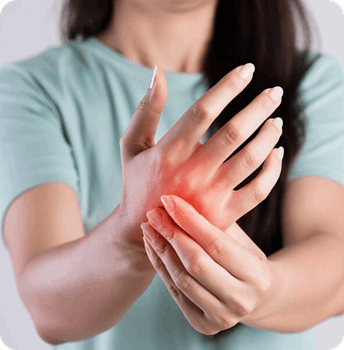Arthritis is a term used to describe a group of conditions affecting joints and surrounding tissues, leading to a range of physical challenges. As one of the most common causes of joint pain and limited mobility, arthritis can significantly influence daily activities and overall quality of life. Explore three major types, their key characteristics, and how they can impact joint health and functionality.
Osteoarthritis
Osteoarthritis is the most prevalent form of arthritis, often referred to as the “wear-and-tear” condition. It occurs when the cartilage that cushions the ends of bones within joints gradually deteriorates. The loss of cartilage can lead to joint pain, stiffness, and reduced range of motion, particularly after periods of inactivity or overuse. Osteoarthritis primarily affects weight-bearing joints, such as the hips, knees, and spine, although smaller joints, like the fingers, can also be impacted.
Rheumatoid Arthritis
Rheumatoid arthritis is an autoimmune disorder, meaning the body’s immune system mistakenly attacks healthy joint tissues. This condition often involves symmetrical joint pain, swelling, and inflammation, typically starting in smaller joints, such as the fingers and wrists. Over time, it can affect other parts of the body, impacting joint alignment and even leading to joint deformity if left unaddressed. Chronic inflammation associated with this condition may also contribute to systemic effects beyond the joints.
Psoriatic Arthritis
Psoriatic arthritis affects individuals with psoriasis, a chronic inflammatory skin condition. This type of arthritis combines joint inflammation with skin symptoms, such as red patches and scaling. This condition can affect joints on one or both sides of the body, leading to stiffness, swelling, and tenderness. Additionally, some individuals experience changes in nail appearance, such as pitting or separation from the nail bed. Left unmanaged, it has the potential to cause permanent joint damage.
Effects
This condition affects more than just the joints; it influences physical function and overall well-being. These are some of the common effects observed across different forms:
- Joint pain and stiffness can significantly reduce mobility, making it challenging to perform even routine tasks.
- Inflammation and swelling may impair joint functionality and result in discomfort.
- Risk of joint damage or deformity increases, with prolonged inflammation potentially leading to permanent structural changes.
- The impact on daily activities can reduce independence and hinder participation in hobbies or work-related tasks.
How to Manage
Although arthritis presents physical challenges, there are approaches to managing its progression and effects. Monitoring symptoms and seeking early interventions tailored to the specific type of arthritis can play a role in maintaining joint health. Medical professionals may recommend combining lifestyle adjustments, therapeutic techniques, and, in some cases, medications to effectively manage symptoms.
Take Control Today
Understanding arthritis and its various forms empowers individuals to take proactive steps toward managing joint health. It also helps improve quality of life. By learning about symptoms, treatment options, and lifestyle adjustments, you can take control of your well-being. This can reduce the impact of arthritis on daily activities. For detailed insights into effective management or personalized guidance, explore expert resources tailored to your unique situation. Take the first step toward better joint health today.

